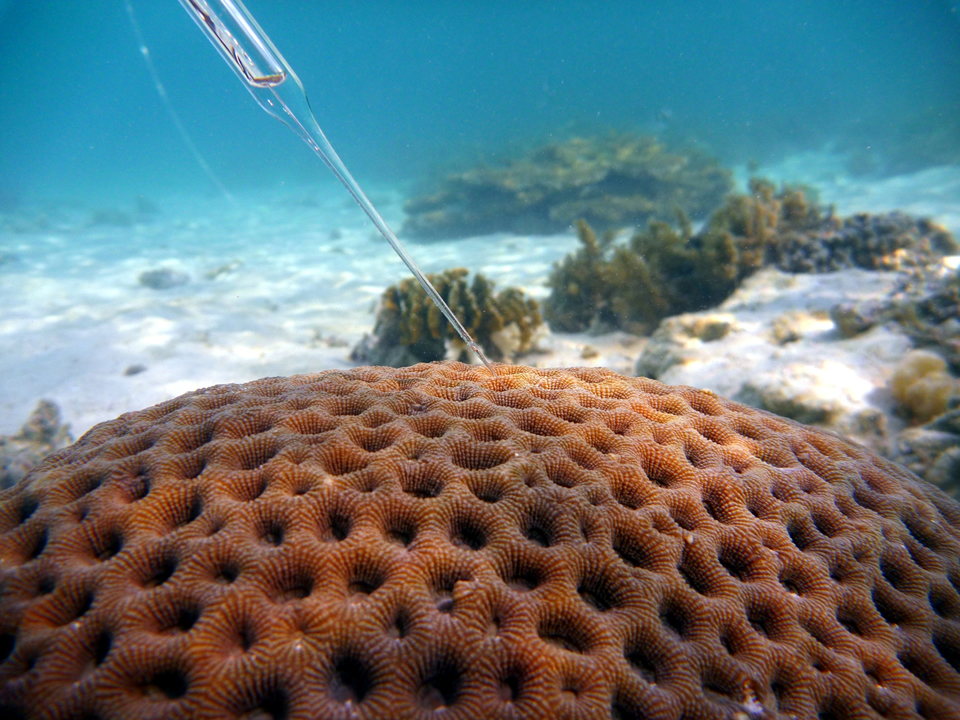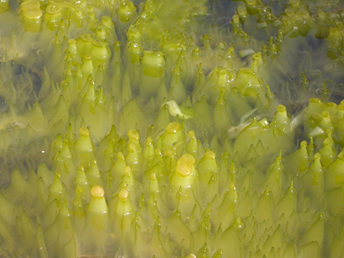 |
||||||||||||
|
Sapere-Aude Advanced Grant
|
||||||||||||
|
|
||||||||||||
|
2014 Behrendt, L., Nielsen, J. L., Sørensen, S. J., Larkum, A. W. D., Winther, J. R., and Kühl, M. (2014) Rapid TaqMan-based quantification of chlorophyll d-containing cyanobacteria in the genus Acaryochloris. Wangpraseurt, D., Larkum, A. W. D., Franklin, J., Szabo, M., Ralph, P. J, and Kühl, M. (2014a) Lateral light transfer ensures efficient resource distribution in symbiont-bearing corals. Wangpraseurt, D., Polerecky, L., Larkum, A. W. D., Ralph, P. J., Nielsen, D. A., Pernice, M., and Kühl, M. (2014c) The in situ light microenvironment of corals. Wangpraseurt, D., Kühl M., and Jacques S. L. Optical properties of symbiont-bearing corals. (SUBMITTED)
|
||||||||||||
The project investigates fundamental links between the microscale organization of aquatic photosynthetic tissues and biofilm communities, their bio-optical properties and quantum efficiency.
Based on a detailed characterization of how incident irradiance is absorbed, scattered and dissipated via photosynthesis and non-photochemical energy dissipation (fluorescence and heat), complete energy budgets will be constructed and related to the micro-structural organization of cells and chloroplasts in aquatic plant tissue, compact photosynthetic biofilms, and coral tissue harboring photosymbionts. more details..
|
||||||||||||


